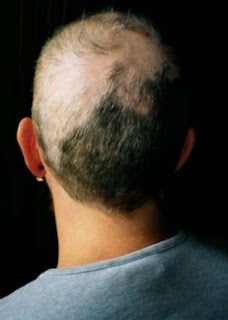 What is alopecia?
What is alopecia?Alopecia or hair loss can be due to a variety of causes. Knowing the type of alopecia you suffer and what its origin is, is the first step to start the most effective treatment in your case.
Causes of alopecia areata
The disease may be caused by several autoimmune or psychological factors, which intervene on a genetic basis. The presence of alopecia areata has been related to infectious, endocrine, genetic, psychological factors, and other causes such as eye or dental irritations and head trauma.
Pathogenesis
Some autoimmune factor causes the induction of the phase of detachment (telogen) and hair loss, as well as a paralysis at the beginning of the growth phase of the follicle (anagen) of a certain area.
Symptoms of alopecia areata
Patients usually present one or more oval or round alopecic plates, 2 to 5 cm in diameter, located on the scalp, beard or eyebrows. Inside these plates the skin maintains the follicular orifices, but without hair. On the edge of the plate are short hairs, thin upwards and wide downwards.
.
Treatment for alopecia areata
Although there is no totally effective and risk-free treatment, monoxidil, corticoids, rubefacients, etc. are usually used topically, and corticoids and cyclosporines are used systemically.